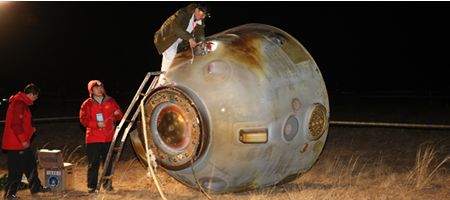China’s successfully recovered its unmanned Shenzhou-8 spacecraft, following its docking with the country’s fledgling space station Tiangong-1.

Launched on November 1, Shenzhou-8 first hooked up with the space lab two days later. The two vessels then orbited for 12 days, 343km above the surface of the Earth, before disengaging and repeating the exercise on November 14.
It parachuted to Earth in the Mongolian desert yesterday.
The successful docking tests with the space lab were an important milestone for the country’s space plans. Chinese officials have hailed the tests as a complete success.
“Acquisition of the space docking technology is vital to China for implementing the three-phase development strategy of its manned space program,” spokeswoman Wu Ping told state news agency Xinhua.
Data from the flight will be used to refine plans for future missions.
The spacecraft was carrying a series of biological experiments for the German space agency, designed to test the effects of zero gravity and radiation on plants, bacteria and human cancer cells.
Another two missions to dock with Tiangong-1 are planned for next year, at least one of which will be manned.
The space lab is due for completion in 2016, and is intended to become a manned space station by around 2020 – although, at 60 tons, it will be significantly smaller than the 400-ton International Space Station.






